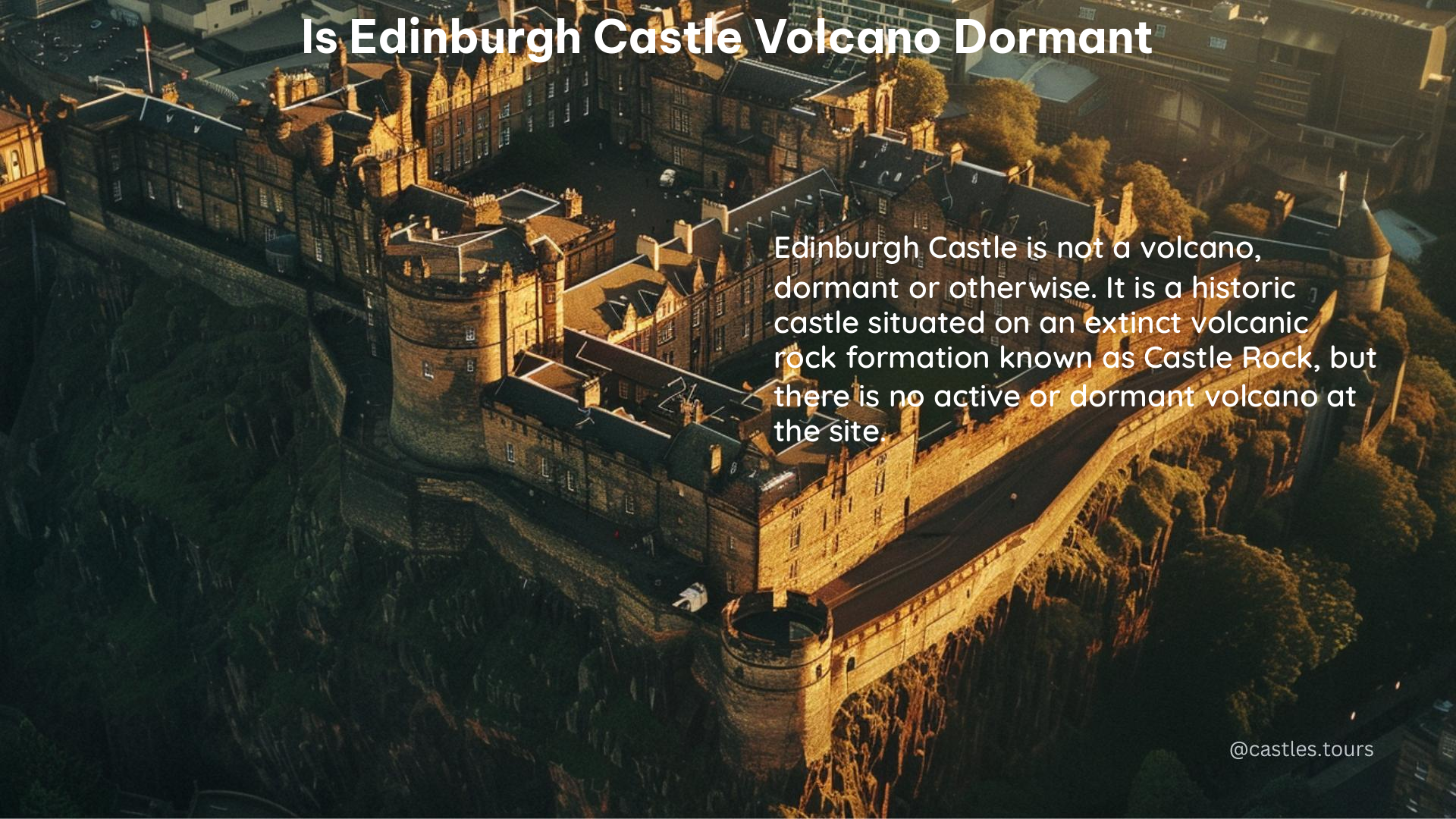Yes, Edinburgh Castle is built on a dormant volcano. Castle Rock, the site of the castle, was once an active volcano 350 million years ago, but it is now considered dormant and will likely never erupt again.
The Volcanic Origins of Edinburgh Castle
Edinburgh Castle is situated on an imposing volcanic rock formation known as Castle Rock. This rock was formed by an ancient volcano that was active around 350 million years ago during the Carboniferous period. The volcano erupted, spewing lava and ash, which eventually cooled and solidified into the distinctive craggy landscape that Edinburgh Castle now sits upon.
Over millions of years, the volcano became dormant, and the landscape was shaped by glacial activity during the last ice age. The steep cliffs and rocky outcrops that characterize Castle Rock were carved out by the movement of glaciers, leaving behind the dramatic setting that the castle now occupies.
The Geological Composition of Castle Rock

Castle Rock is composed primarily of a type of igneous rock called dolerite, which is a dark, fine-grained rock that is resistant to erosion. This dolerite was formed from the rapid cooling of the lava that erupted from the ancient volcano. The rock also contains inclusions of other volcanic materials, such as basalt and tuff, which add to the geological complexity of the site.
The unique geological composition of Castle Rock has played a significant role in the castle’s history and strategic importance. The steep, rocky cliffs provided a natural defensive position, making the site an ideal location for a fortified settlement. The durable dolerite also allowed the castle’s structures to be built upon a solid foundation, withstanding the test of time and the elements.
The Dormant Status of the Edinburgh Castle Volcano
While Castle Rock was formed by an active volcano millions of years ago, the volcano is now considered dormant and poses no threat of eruption. Dormant volcanoes are those that have not erupted in a very long time and are not currently showing any signs of volcanic activity.
The last known volcanic activity in the Edinburgh area was during the Carboniferous period, around 350 million years ago. Since then, the volcano has been completely inactive, and there are no indications that it will become active again in the foreseeable future.
Geologists have closely studied the geology of Castle Rock and the surrounding area, and they have found no evidence of ongoing volcanic processes or the potential for future eruptions. The rock formations are stable, and the only geological activity in the area is the gradual erosion and weathering of the landscape over time.
The Significance of Edinburgh Castle’s Volcanic Origins
The fact that Edinburgh Castle is built upon a dormant volcano adds to the site’s historical and cultural significance. The castle’s dramatic setting, perched atop the towering Castle Rock, has long been a source of fascination and inspiration for visitors and residents alike.
The volcanic origins of the castle’s location have also influenced the way the site has been used and fortified over the centuries. The steep, rocky cliffs provided a natural defensive position, making it an ideal location for a fortified settlement. The durable dolerite rock also allowed the castle’s structures to be built upon a solid foundation, withstanding the test of time and the elements.
Today, the volcanic history of Edinburgh Castle is an integral part of its story and a key aspect of its appeal as a tourist destination. Visitors can learn about the geological processes that shaped the castle’s setting and explore the ways in which the volcanic origins of the site have influenced its history and development.
Exploring the Volcanic Landscape of Edinburgh Castle
Visitors to Edinburgh Castle can experience the volcanic origins of the site firsthand by exploring the various geological features and formations that can be found on Castle Rock. One of the most notable features is the series of basalt columns that can be seen on the castle’s esplanade, which were formed by the rapid cooling of lava.
Visitors can also explore the castle’s underground vaults and tunnels, which were carved out of the volcanic rock over the centuries. These subterranean spaces offer a unique glimpse into the geological history of the site and the ways in which the volcanic landscape has been shaped and utilized by human activity.
In addition to the castle itself, the surrounding area of Edinburgh is also home to a number of other geological features and landmarks that are related to the region’s volcanic past. The iconic Arthur’s Seat, a prominent hill located just east of the city center, is also the remnant of an ancient volcano, and visitors can explore its rugged, volcanic landscape.
Conclusion
In conclusion, Edinburgh Castle is indeed built upon a dormant volcano, a fact that adds to the site’s historical and cultural significance. The castle’s dramatic setting, perched atop the towering Castle Rock, is the result of millions of years of volcanic activity and geological processes, and visitors can explore the volcanic origins of the site through a variety of geological features and landmarks.
Whether you’re a history buff, a geology enthusiast, or simply someone who appreciates the natural beauty of Scotland’s landscapes, a visit to Edinburgh Castle and the surrounding area is sure to be a fascinating and rewarding experience.
Reference:
– Edinburgh Castle: A Volcanic Fortress
– The Geology of Edinburgh Castle
– Volcanic Origins of Edinburgh
